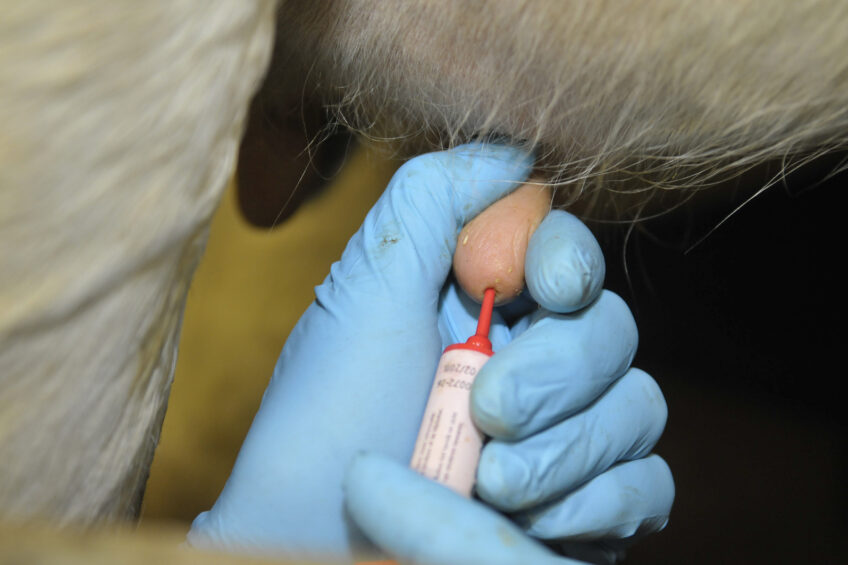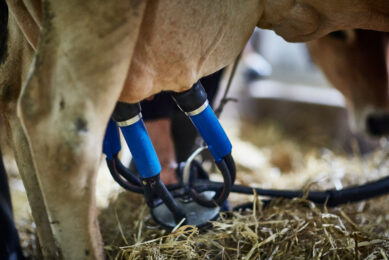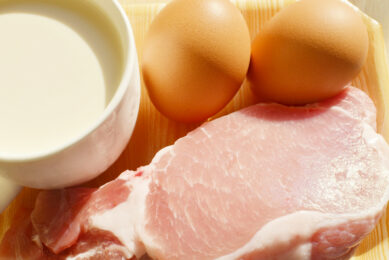Mastitis prevention with mammary probiotics

New research shows that the cow’s own lactic acid bacteria, isolated from the bacteria in the mammary gland, could serve as a tool to prevent and/or treat mastitis.
Bovine mastitis is a costly disease in dairy cattle worldwide. Currently, the control of bovine mastitis is mostly based on prevention by thorough hygienic procedures during milking. Additional strategies include vaccination and utilisation of antibiotics. Despite these measures, mastitis is not fully under control, thus prompting the need for alternative strategies. One alternative is the emerging concept of mammary probiotics. For this purpose, lactic acid bacteria (LAB) are good candidates due to their Generally Recognised As Safe (GRAS) status and their recognised technological and inhibitory properties. LAB have been investigated for many years for their beneficial effects on human health. Likewise, the use of probiotics has gained interest in the veterinary community.
Study in Brittany region
French and Brazilian researchers therefore carried out a study, aimed at isolating autochthonous lactic acid bacteria (LAB) from bovine mammary microbiota that exhibit beneficial properties that could be used for mastitis prevention and/or treatment. The samples were collected from 20 Holstein dairy cows in 2 herds belonging to the Inter-Bio Bretagne network (organic farming organisation), in the Brittany region of France. One quarter per cow was sampled, corresponding to the left or right rear quarter. Only quarters without any clinical symptoms of mastitis were selected. Teats were thoroughly washed with water and cleaned with 70% ethanol and individual paper towels. Samples were taken by using a swab, inserted 5 mm inside the teat apex and by collecting foremilk, and further tested in the laboratory.
3 strains with high potential
Sampling the teat canals of 20 cows on 2 farms led to the isolation and identification of 165 isolates. Some strains present high in vitro adhesion and invasion capacity and are potential candidates able to compete with pathogens for the colonisation of mammary gland tissue and to exert prolonged beneficial effects. 10 non-redundant LAB strains belonging to the genera Lactobacillus and Lactococcus were further characterised with regard to several properties: surface properties (hydrophobicity, autoaggregation); inhibition potential of 3 main mastitis pathogens, Staphylococcus aureus, Escherichia coli and Streptococcus uberis; colonisation capacities of bovine mammary epithelial cells (bMEC); and immunomodulation properties. 3 strains, Lactobacillus brevis 1595 and 1597 and Lactobacillus plantarum 1610, showed high colonisation capacities and a medium surface hydrophobicity. These strains are good candidates to compete with pathogens for mammary gland colonisation. Moreover, 9 strains exhibited anti-inflammatory properties, as illustrated by the lower IL-8 secretion by E. coli-stimulated bMEC in the presence of these LAB. Full genome sequencing of 5 candidate strains allowed to check for undesirable genetic elements such as antibiotic resistance genes and to identify potential bacterial determinants involved in the beneficial properties.
Conclusion: promising properties found for preventing/treating masitis
One important trait for selecting a candidate probiotic strain is the ability to colonise tissues and, as a result, exert a prolonged beneficial effect and or compete with pathogens for the niche. The study presented here shows that some LAB strains show potential, after studying their inhibitory potentials in terms of acidification, production of hydrogen peroxide or other inhibitory compounds such as bacteriocin-like compounds and with regard to their colonisation capacity. All these characteristics are important. Pro-inflammatory properties could help stimulate the innate immune system and promote the clearance of pathogens. In addition, anti-inflammatory properties could contribute to the decrease of inflammation in association with or following antibiotic treatment. The LAB candidates identified in this study exhibited 1 or more promising properties for the prevention and/or treatment of bovine mastitis. However, these candidate strains require further investigation to evaluate their barrier effect with regard to major mastitis pathogens and their immune-modulatory potential on bovine mammary epithelial cells. The mandatory experiments will be to assess in vivo safety and to challenge their efficacy in field conditions. If these LAB strains will be used for a treatment, it will be used as a topical treatment.
The original study has been published in PLOS One: Bouchard DS, Seridan B, Saraoui T, Rault L, Germon P, Gonzalez-Moreno C, et al. (2015) Lactic Acid Bacteria Isolated from Bovine Mammary Microbiota: Potential Allies against Bovine Mastitis. PLoS ONE 10(12).
Join 13,000+ subscribers
Subscribe to our newsletter to stay updated about all the need-to-know content in the dairy sector, two times a week.










